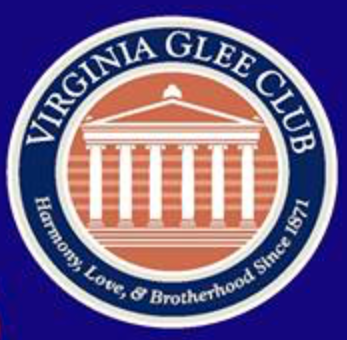Alpha Epsilon Pi (ΑΕΠ or AEPi), the global Jewish college fraternity, has 166 active chapters in the United States, Canada, United Kingdom, France, and Israel with a membership of over 9,000 undergraduates. Alpha Epsilon Pi is a Jewish fraternity, though non-discriminatory and open to all who are willing to espouse its purpose and values.[4]
History[]
AEPi was founded in 1913 under the Washington Square Arch at New York University (NYU) by Charles C. Moskowitz and 10 other Jewish men: David K. Schafer, Isador M. Glazer, Herman L. Kraus, Arthur E. Leopold, Benjamin M. Meyer, Arthur M. Lipkint, Charles J. Pintel, Maurice Plager, Hyman Shulman, and Emil J. Lustgarten. These men are known as the "Immortal 11." Their first pledge was Samuel L. Epstein.[5]
Charles C. Moskowitz had just transferred to New York University's School of Commerce from the City College of New York. Several fraternities at the School of Commerce expressed interest in him and one gave him a bid. The name of that fraternity is unknown. When Charles asked if his close Jewish friends could join as well, he was told that the invitation was for him alone. At this point, the group of 11 men began meeting regularly in a German rathskeller called "Haan's Ladies' and Gentlemen's Restaurant, Cafe and Rathskeller". Official school recognition of AEPi was granted on November 7.[5]
The founding members always intended for AEPi to be a national fraternity. Long before the second chapter, the NYU group was designated "Alpha Chapter." In 1917, the local fraternity Phi Tau at Cornell University became the Beta Chapter of AEPi.[6]
Counting the Beta Chapter only fifty-two men had been initiated by April 6, 1917, the date the United States formally declared war on Germany and her allies. Almost every undergraduate and alumnus answered the call of the colors causing the fraternity to become nearly inactive during the war years. [5]
In the years between the world wars, Alpha Epsilon Pi had grown to twenty-eight chapters. But tough times were known to be forthcoming at the 1941 convention, and many knew that undergraduate and alumnus would again be called to duty. Expansion remained dormant throughout World War II.[5]
With the end of the war and the shift of national headquarters to St. Louis, Alpha Epsilon Pi had gained new life and momentum in its reopening of inactive chapters, expansion to new campuses, and the merging with other locals that had been hit hard by the war. In 1940, Sigma Omega Psi joined Alpha Epsilon Pi adding three chapters, as did Sigma Tau Phi in 1947.[5]
The next two decades were a time of steady growth and prestige for Alpha Epsilon Pi, as well as other fraternities. Expansion was occurring at an incredible rate for the Greek system as a whole. However, with the onset of fighting in Vietnam in the early 1960s, fraternity life faltered. Liberal student bodies revolted against authority and the Greek system, which was seen as a conservative, elitist group.[5]
Ironically, the roots of fraternity itself lie in revolution against authoritarianism. Membership plummeted and nearly half the chapter roll was lost. It almost looked as if it might have been the end for Alpha Epsilon Pi. However, due to Alpha Epsilon Pi’s perseverance, the fraternity was able to reverse the trend and stabilize following the Vietnam War.[5]
Reidentifying with its Jewish heritage, the men of Alpha Epsilon Pi refused to say die. Possessed with faith and courage, they were determined that national strength could be regained, and that the fraternity would once again be able to pursue its mission of shaping young Jewish men into community leaders.[5]
In 2009, AEPi became the first fraternity to establish a chapter in Israel at the Interdisciplinary Center in Herzliya.[7][8]
In 2014, AEPi was the first college student organization to be admitted as a full member to the Conference of Presidents of Major American Jewish Organizations.[9]
References[]
- ↑ "Alpha Epsilon Pi International mission statement". Archived from the original on 12 October 2010. http://web.archive.org/web/20101012194644/http://www.AEPi.org/?page=MissionStatement. Retrieved 6 October 2010.
- ↑ Crosby, Ernest Howard, The Search
- ↑ Roll - Alpha Epsilon Pi
- ↑ About AEPi
- ↑ 5.0 5.1 5.2 5.3 5.4 5.5 5.6 5.7 "History". Alpha Epsilon Pi. http://www.aepi.org/about-aepi/history-of-alpha-epsilon-pi/. Retrieved 27 December 2013.
- ↑ Dunn, Sidney N. (2003). Alpha Epsilon Pi: Commitment for a lifetime. Indianapolis, Indiana: Alpha Epsilon Pi Fraternity, Inc..
- ↑ Strauss, Ilana (15 June 2009). "Israel's first college fraternity opens". Jerusalem Post. http://fr.jpost.com/servlet/Satellite?cid=1244371106498&pagename=JPArticle%2FShowFull. Retrieved 29 December 2009.
- ↑ Udasin, Sharon. "Brothers in the Holy Land: AEPi chapter in Herzliya is first college fraternity in Israel". http://www.jweekly.com/article/full/39284/brothers-in-the-holy-land-AEPi-chapter-in-herzliya-is-first-college-fratern/. Retrieved 16 July 2009.
- ↑ JTA (7 January 2014). "Jewish Fraternity Becomes Full Member of Conference of Presidents". The Jewish Daily Forward. http://forward.com/articles/190476/jewish-fraternity-becomes-full-member-of-conferenc/. Retrieved 9 January 2014.
External links[]
| This page uses Creative Commons Licensed content from Wikipedia (view authors). |
